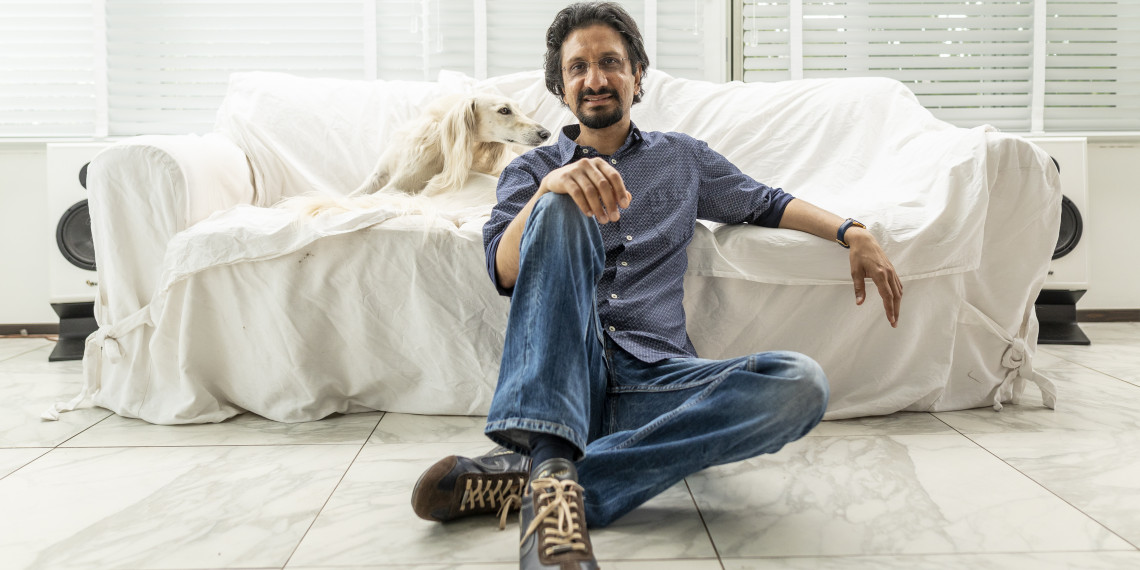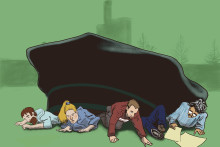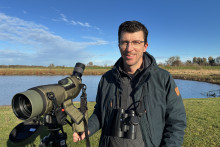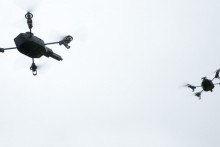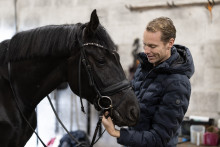At the time of the interview, Professor Srirang Manohar is up to his neck in cardboard boxes, while still in his office in the Zuidhorst. After excusing himself for the supposed mess, he shares his excitement of moving to the ‘truly astonishing’ Technohal. Manohar is moving from the Biomedical Photonic Imaging group to take up the position of Chair and Full Professor of a new research group: Multi-Modality Medical Imaging – or M3i in short. ‘Our main goal is to use the talent of this university to solve clinical problems in hospitals. The more short-term goal is to get this new group to flourish. I believe we have a unique mix of critical ingredients: medical technology, the TechMed Centre and top-class clinical Professors like Bob Geelkerken and Michel Reijnen.’
'After my bachelor, I felt completely lost'
Growing up
Srirang Manohar grew up in the Indian city of Bangalore. ‘Which is massive by European standards, with a population of about 8 million people nowadays. I had the good fortune of being born in a middle-class family. My mother was an artist, my father worked at a research institute. They left me in peace to find out what I wanted, and I can honestly say my childhood was the happiest period of my life. You could bike anywhere and play where you wanted. I felt totally safe and carefree.’
Manohar went to an all-boys Catholic middle school in Bangalore. ‘Very tough, very disciplined,’ he says. ‘With children from all corners of society. We wore uniforms to balance things out between rich and poor. I wouldn’t call it an elite school, but most of the students ended up being very successful. One of them invented Hotmail, another one became captain of the national cricket team.’ After eight years, it was time for pre-university. ‘The first time we went to class together with girls.’ Jokingly adding: ‘At this point we realised they also existed.’ At university – still in Bangalore – he studied power engineering. ‘Which was thought to be very important to the country. But after my bachelor, I felt completely lost. Most people should know what they want by then, I didn’t. Luckily, my father was working at one of the top universities and I ended up as a project assistant for PhD students in the field of material sciences. There, in the lab researching the thermal properties of matter, I fell in love with science.’
Love story
Starting a PhD one year later at the Indian Institute of Science is part of his ongoing scientific love story. Which sparked another love story and his eventual move to Enschede. ‘During my PhD, I had the opportunity to organise an international conference. I searched online for more groups in the same research field to participate– on AltaVista, since Google didn’t even exist back then. The first hit: a group at the University of Twente. I sent an email to their secretary. Later on, we stayed in touch: she visited my university in India, I visited her in the Netherlands. Soon, it became a bit more than that between us. Right now, you ask? We’re very happily married,’ Manohar says, adding: ‘Something quite enigmatic: the night before my job interview for a postdoc position in photoacoustics at the UT, she dreamt that I helped her mother who, sadly enough, had passed away years earlier because of breast cancer.’
Dream machine
Nowadays, Manohar is the project leader of a multi-million European project called PAMMOTH. ‘We’re working on a breast cancer imaging machine that is going to be beyond state-of-the-art,’ he says determined. If all pieces fall in their place, the consortium the professor is leading will have a machine ready that combines ultrasound and photoacoustics, and can give quicker and better results than the current mammography technology. ‘Breast imaging nowadays is well established: by using x-ray mammography, ultrasound and MRI technology – often all three – a physician can get enough information to decide which further steps to take. But there are several major flaws. The x-ray procedure is painful and ionizing radiation is used. Especially before menopause, it’s hard to distinguish a tumour from glandular tissue. With ultrasound, it’s also not easy to spot the difference between a benign or malignant tumour. An MRI is highly expensive, and the patient has to lie completely still for a long time.’
'This diagnostic method is painless, radiation-free and as real-time as it gets'
By combining and building on existing photoacoustic and ultrasound techniques, the PAMMOTH machine can solve multiple problems at once, according to Manohar. A woman lies face down in the machine, with her breasts in a bowl-like construction. Within five minutes she is scanned, after which the machine can give the physician the proper information. ‘This diagnostic method is painless, radiation-free and most important of all as real-time as it gets. This saves patients weeks of waiting in fear for results.’

This machine is a potential lifesaver, considering the sad statistics: over 2 million women were diagnosed with breast cancer in 2018 worldwide and 500 thousand lost their lives to the disease, according to the World Cancer Research Fund. Manohar is quick to put things into perspective. ‘In principle, this device could replace the current diagnostic procedures. There is a lot of hard work put into this project by all involved partners. Now, all of the components have come together at the UT and are being assembled. Later this month, the first machine should be in a hospital. We have to show that all the functionalities work the way they should, which should make it clear if this machine has a right to exist. If so, the results should lead to large clinical studies, which will help us find out if this is an effective method.’
Dutch behaviour
Besides diagnosing breast cancer, the Multi-Modality Medical Imaging professor is also working on projects aimed at imaging from the inside out. For instance in the case of hydrocephalus (also known as water on the brain). Together with Indian researchers, he is developing a needle-scope that is packed with optic fibres and ultrasound sensors, which can help surgeons do the procedure more accurately. ‘Especially in rural areas, surgeons usually don’t have good navigation tools. So they have to do it blindly: making a hole in the skull and placing a shunt. If you have a navigation tool on the inside, you gain a lot more information about the position of the ventricles.’ While looking into this topic, Manohar worked together with a bachelor’s student. ‘She showed the most typical Dutch behaviour, by simply writing an email to a surgeon at MST who is an expert on hydrocephalus. Personally, I thought that was too cheeky of her. But we were invited to come over and witness a surgery. Dutch people are very forward, which has its upsides. After living here for more than eighteen years, I thought I was used to it. It’s also a crazy example of how good the local hospitals – MST and ZGT – are to us.’
'I don’t know what I would do if it wasn’t something that was applicable for the benefit of people'
Manohar lives in Haaksbergen, together with his wife and their three dogs. They have a Barzoi, a Saluki and – their latest addition – a Scottish deerhound. ‘That thing was a giant puppy, with zero clue about its own size and surroundings. Luckily, we have a huge backyard, where the dogs love to run around.’ Cooking, especially Indian food, is a passion of his and his wife. Creativity is another outlet. As the son of an artist, the apple didn’t fall far from the tree. Which is clearly apparent when he shows a few sketches of his dogs, next to his computer. ‘My mother never pushed me, but I have started sketching recently. She says I’m talented. I don’t know if that’s really the case, but drawing helps me to observe things better.’ He has also been an avid photographer, where observing and timing is of importance too. But if Manohar wouldn’t have become a scientist, maybe he would have been a writer by now. ‘In the old days, I used to write on and off for a local newspaper. Maybe there would have been a career in it. I used to write a lot together with an old friend of mine, who ended up becoming an author of children’s books. It does help me when I’m writing research articles, though.’

Excitement
Excitement is what makes Srirang Manohar tick. Be it in the little things, like coming to work every day or having a bachelor student write emails to a surgeon. Or in the bigger things, like seeing the dreams and ambitions in a big project like PAMMOTH coming together. Because to Manohar, excitement is a catalyst for making things happen. ‘Things that matter, that directly help people. I don’t know what I would do if it wasn’t something that was applicable for the benefit of people.’
Srirang Manohar in a nutshell:
1992 – Graduated from RV College of Engineering
2001 – Obtained a combined MSc-PhD at the Indian Institute of Science and moved to the UT
2004 – Veni laureate
2017-now – Leading the Horizon2020 project PAMMOTH, while at the Biomedical Photonic Imaging group
2019-now – Full Professor and Chair Multi-Modality Medical Imaging
The latest issue of the U-Today Science & Technology Magazine is out now on campus, for free. You can also read the digital version here.


